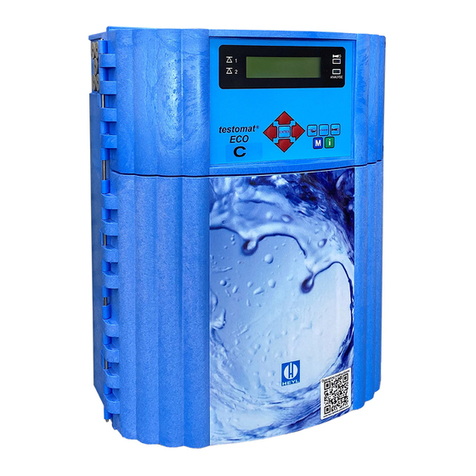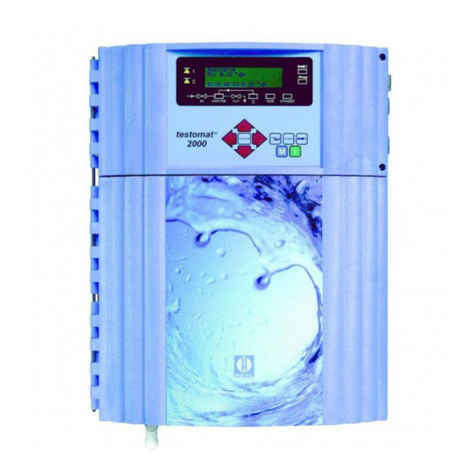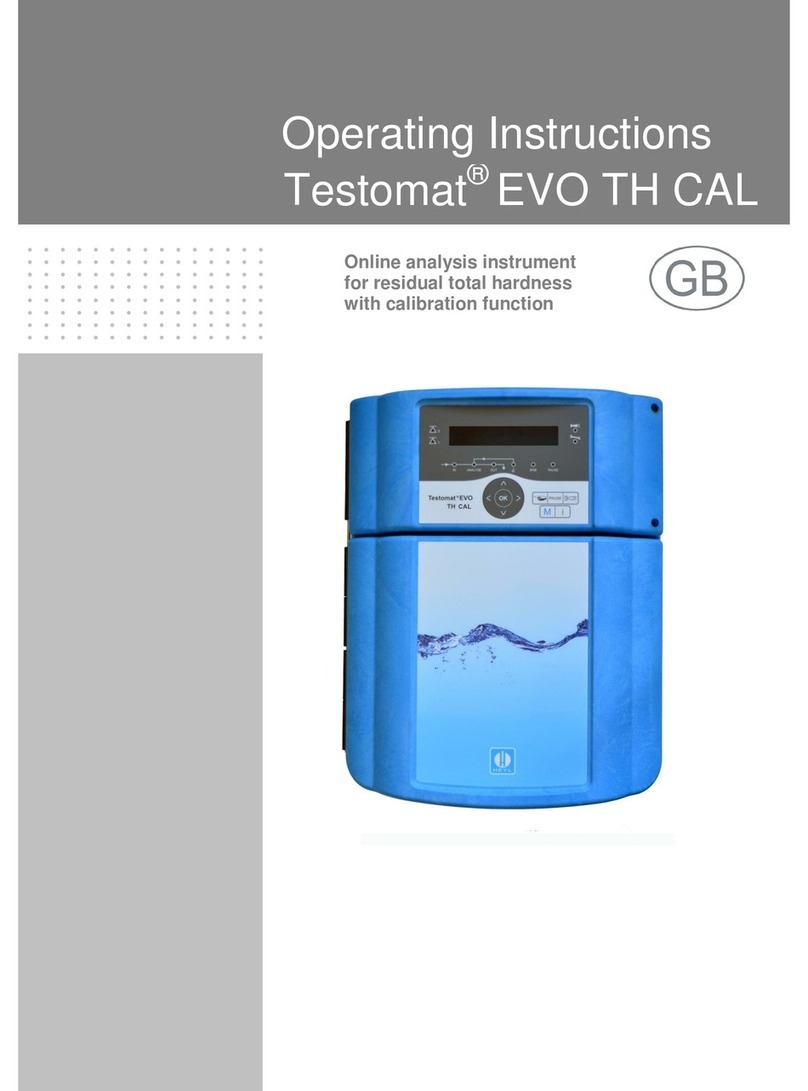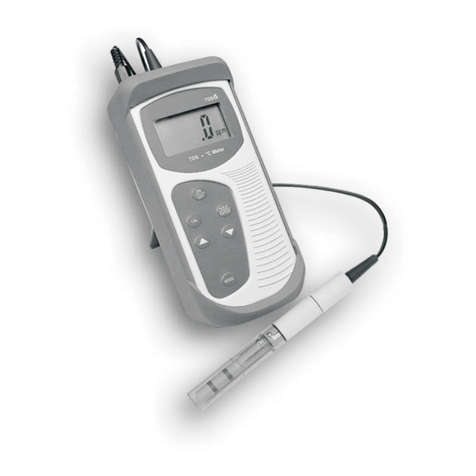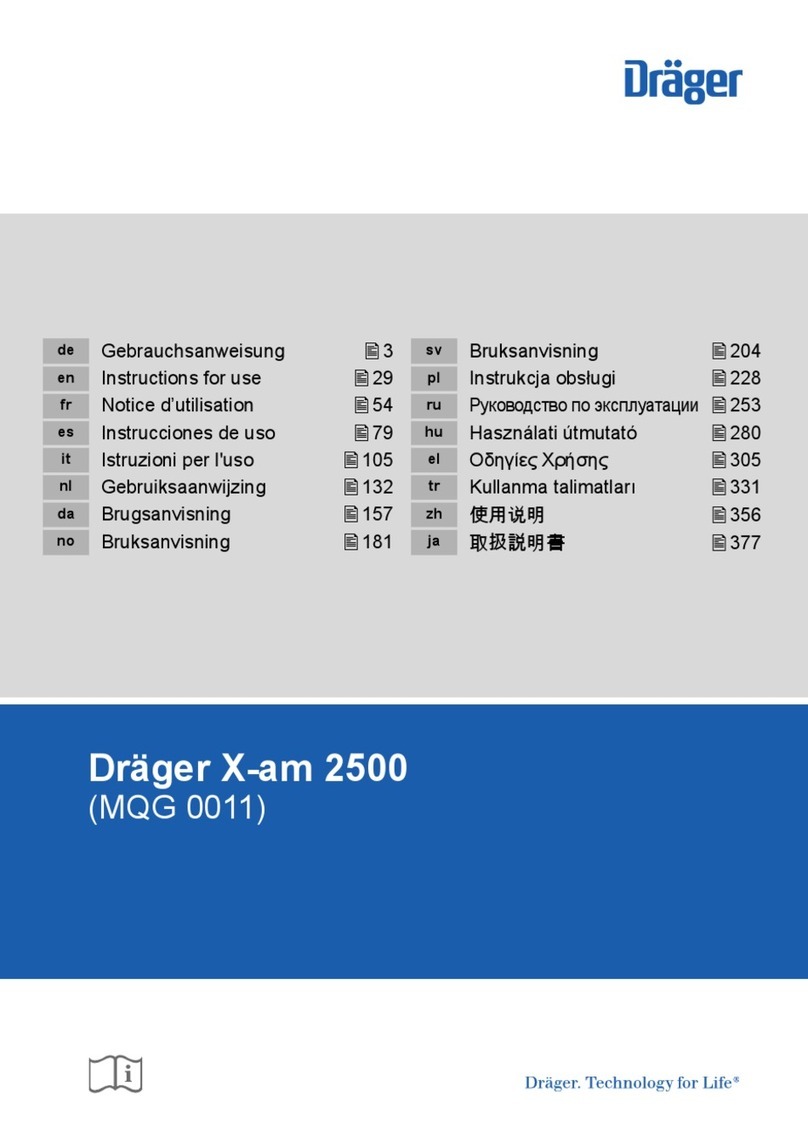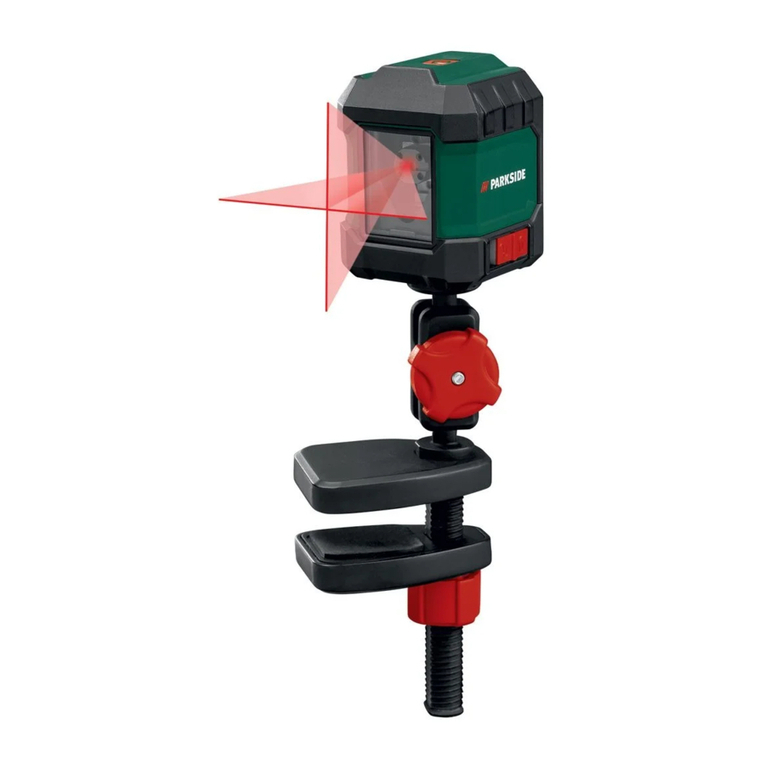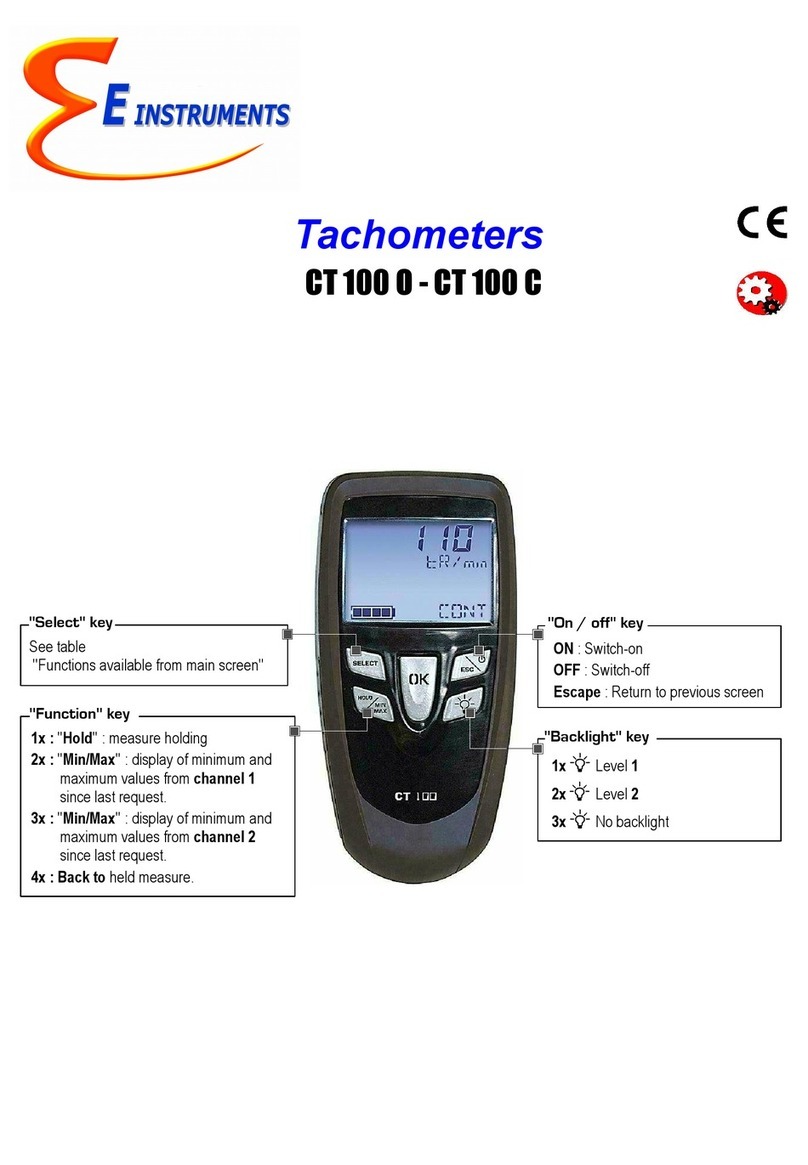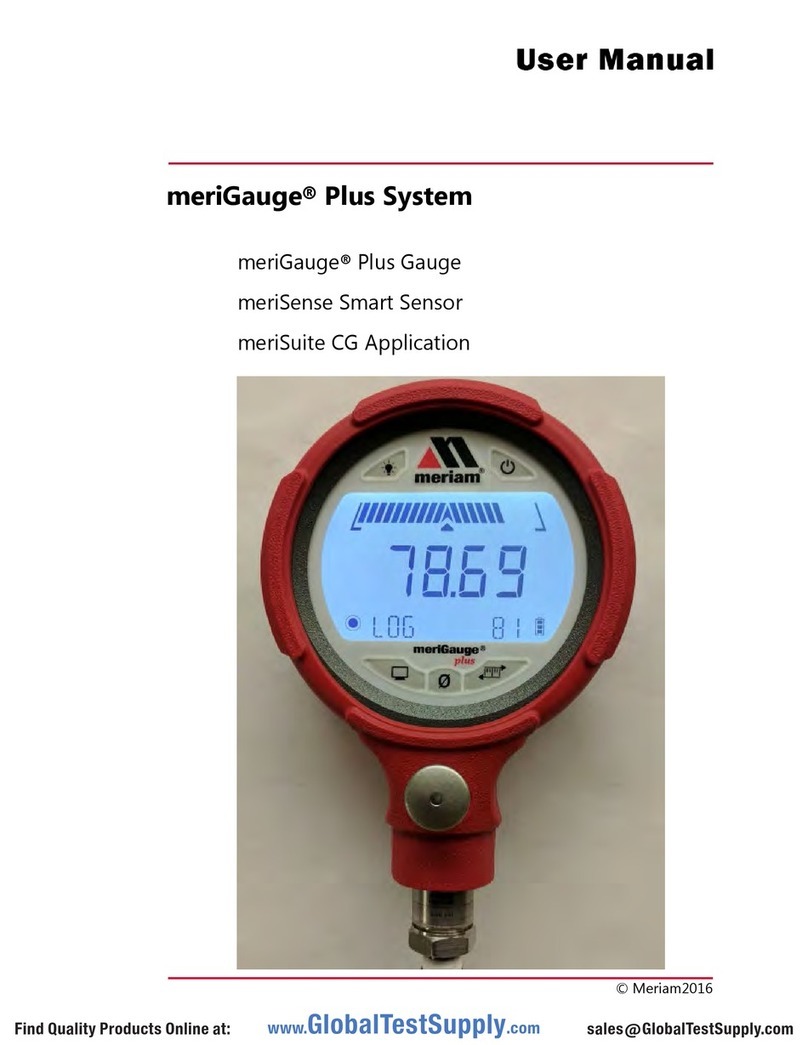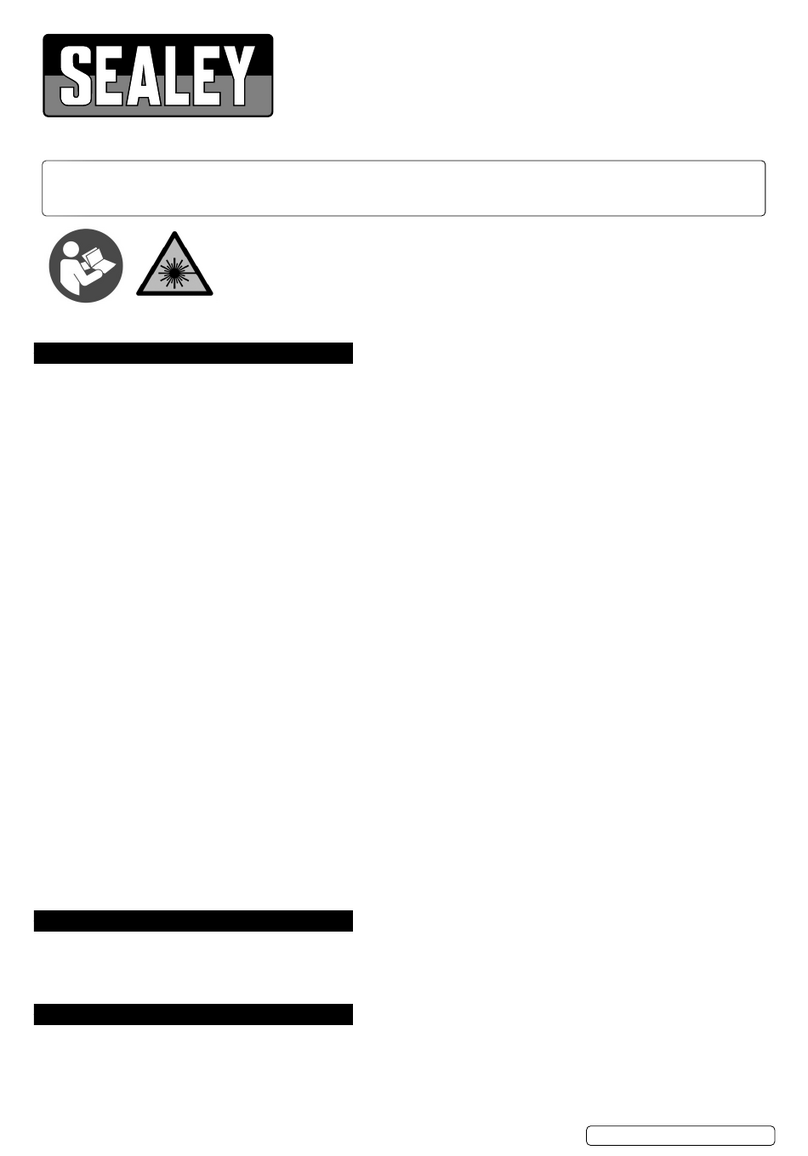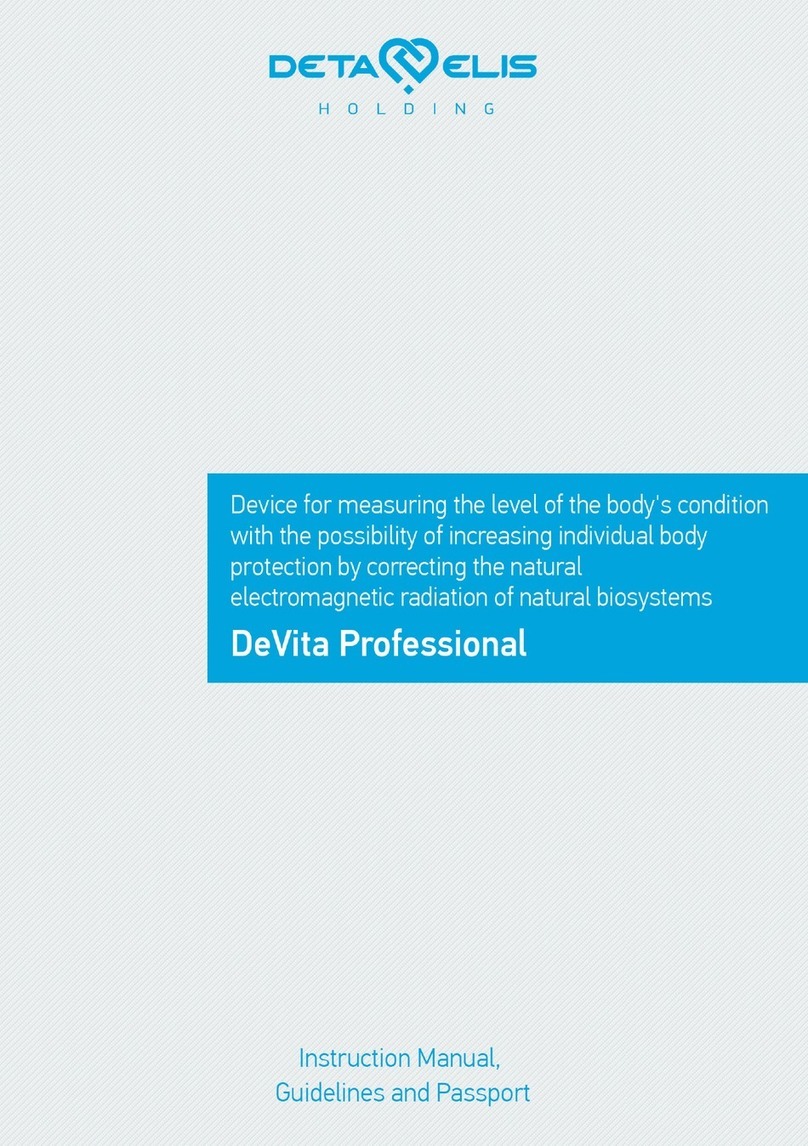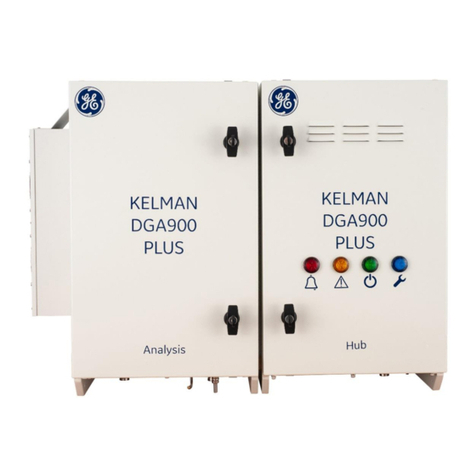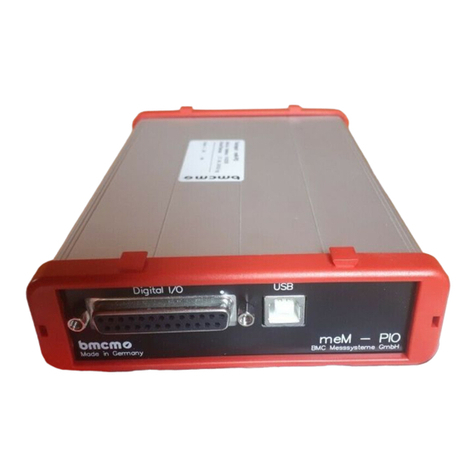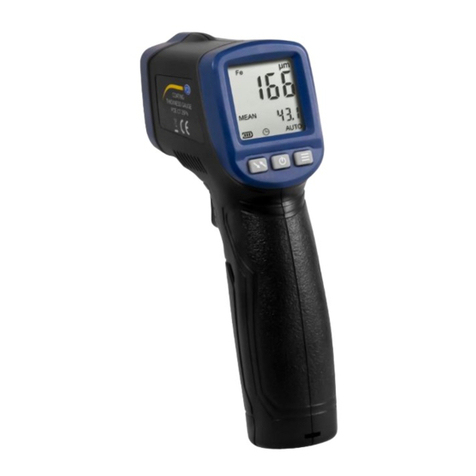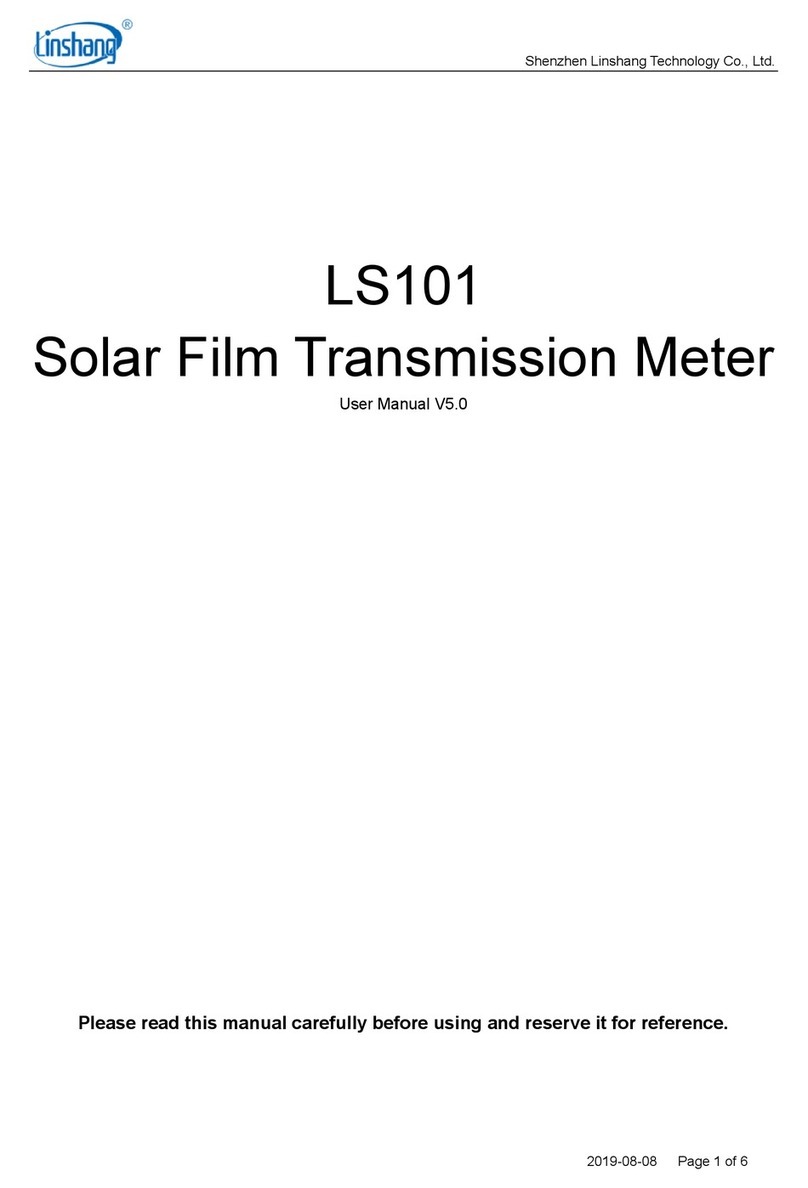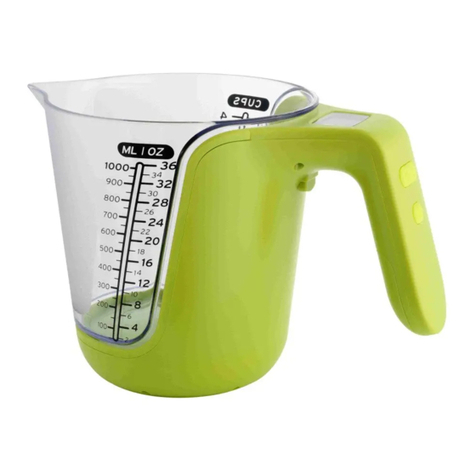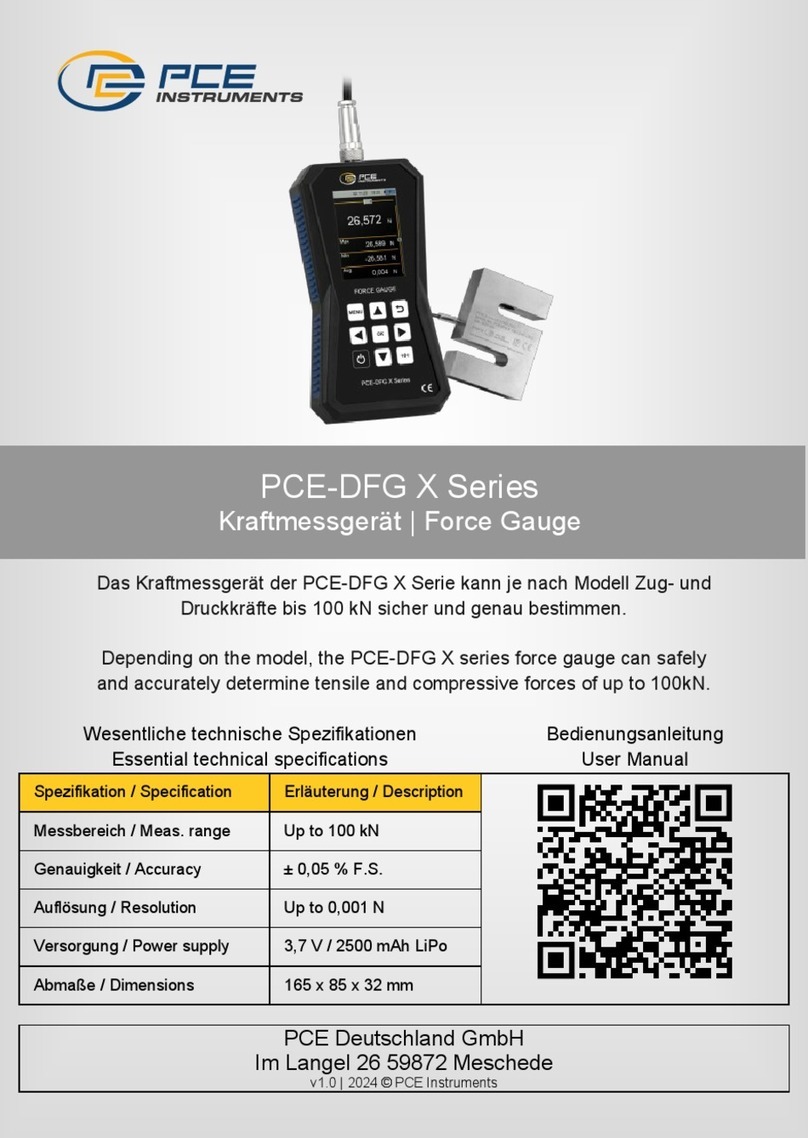Testomat 2000 CLO2 User manual

Testomat 2000
®
CLO2
Process Photometer for
Chlorine dioxide 0 – 4.7 mg/l
Operating Instructions

Content
2
Content
Content ................................................................................................. 2
Important safety information ............................................................. 4
Intended use ......................................................................................... 4
Qualification of the staff ........................................................................ 4
Warning notices in these instructions ................................................... 5
Further documents ................................................................................ 5
Pay particular attention to ..................................................................... 5
General instructions .............................................................................. 5
Installation ............................................................................................. 6
Operation .............................................................................................. 6
Cleaning ................................................................................................ 6
De-installation ....................................................................................... 6
Disposal ................................................................................................ 6
Scope of delivery ................................................................................ 7
Performance specifications ............................................................... 7
Application instructions ..................................................................... 8
Installation ........................................................................................... 9
Operating Testomat 2000® CLO2 in the pressure range of 0.3 to 1
bar ......................................................................................................... 9
Installing Testomat 2000® CLO2 ........................................................... 9
Connecting the water inlet and outlet ................................................. 10
Water inlet ........................................................................................... 10
Water outlet ......................................................................................... 10
Connecting the power supply and devices ......................................... 11
Block diagram Testomat 2000® CLO2 ................................................ 11
Internal design Testomat 2000® CLO2 ............................................... 12
Connecting the mains voltage............................................................. 13
Connecting the plant components ...................................................... 14
Connecting the inputs and outputs ..................................................... 15
Commissioning ................................................................................. 16
Inserting the indicator bottle ................................................................ 16
Extracting the indicator ....................................................................... 16
Opening the water inlet ....................................................................... 17
Instrument settings and data input ...................................................... 17
Functions of the operating and display elements ......................... 17
Switching Testomat 2000® on/off ........................................................ 17
Display functions ................................................................................. 18
Operating elements and function keys ............................................... 19
Operating system ................................................................................ 20
Password protection and basic program ....................................... 21
Selecting the operating mode ............................................................. 22
Selecting the display unit .................................................................... 24
Entering further basic program data .............................................. 25
Internal flushing ................................................................................... 25
External flushing ................................................................................. 25
Interval pause ..................................................................................... 26
Limit value monitoring ......................................................................... 26
Hysteresis ........................................................................................... 27

Content
3
Switch functions of the limit value outputs LV1 and LV2 .................... 28
Switch function 0, duration .................................................................. 28
Switch function 1, impulse .................................................................. 28
Switch function 2, interval ................................................................... 28
Switch function 3, two-point ................................................................ 28
Switch function 4, Duration/inverse .................................................... 28
Switch function 5, range LV1-LV2 ...................................................... 29
Function IN1 ........................................................................................ 29
Water meter ........................................................................................ 29
Alarm/Message ................................................................................... 30
Function AUX ...................................................................................... 30
Service II ............................................................................................. 31
Calibration ........................................................................................... 31
Reset operating time ........................................................................... 33
Maintenance interval ........................................................................... 33
Description of the signal inputs/outputs ........................................ 34
Interfaces (optional) ............................................................................ 36
Installing the interface cards SK910/RS910 ....................................... 36
Monitoring a measuring point.............................................................. 36
Monitoring of two measuring points .................................................... 37
Calculation of output currents ............................................................. 38
Serial interface RS232 ........................................................................ 38
Description of the relay outputs ...................................................... 39
Flushing (external flush valve) ............................................................ 39
LV1 and LV2 limit value outputs ......................................................... 39
Measuring points 1 or 2 (measuring point switch-over) ...................... 41
AUX (programmable function output) ................................................. 41
Alarm (fault message output) .............................................................. 42
Maintenance (output for maintenance message) .............................. 42
Information menu "i" ........................................................................ 43
Program menu "M" ........................................................................... 44
Structure of the basic program............................................................ 46
Error messages/Troubleshooting ................................................... 47
Further information .............................................................................. 48
Maintenance ...................................................................................... 49
Description of maintenance work ........................................................ 49
Service instructions ............................................................................. 50
Testomat 2000® CLO2 spare parts and accessories ..................... 52
Accessories ......................................................................................... 53
Technical data ................................................................................... 54
Conformity Declaration ....................................................................... 55
Product overview Testomat 2000®-Instruments ............................ 56
Check List Testomat 2000® ................................................................ 57

Important safety information
4
Important safety information
Please read these operating instructions carefully and completely
prior to working with the instrument.
Ensure that these operating instructions are always available for all
users.
These operating instructions must always be passed on to the new
owner should Testomat 2000® change hands.
Always adhere to hazard warnings and safety information when
using reagents, chemicals and cleaning agents. Please adhere to
the respective safety data sheet! Download the safety data sheets
for the supplied reagents at http://www.heylanalysis.de .
Intended use
The process photometer Testomat 2000® CLO2 is a robust wet-
chemical online monitor for monitoring the chlorine dioxide content
from 0 to 4.7 mg/l (ppm) using the colorimetric analysis principle. The
feed water must be clear, colourless and free of undissolved
particles. Applications include, e.g., the monitoring of disinfectant
dosing in the drinking water field.
Always adhere to the performance limits stated in the section
entitled “Technical data”.
Always observe the application areas/application limits of the
indicators and the requirements of the medium being measured.
To ensure correct and intended usage, always read and understand
these instructions, especially the section entitled “Important safety
information”, prior to use.
The instrument is not used as intended if
it is used in areas not specified in these instructions.
it is used in areas which do not correspond to the ones described
in these instructions.
Qualification of the staff
Assembly and commissioning require fundamental electrical and
process engineering knowledge as well as knowledge of the
respective technical terms. Assembly and commissioning should
therefore only be carried out by a specialist or by an authorised
individual supervised by a specialist.
A specialist is someone who due to his/her technical training, know-
how and experience as well as knowledge of relevant regulations can
assess assigned tasks, recognise potential hazards and ensure
appropriate safety measures. A specialist should always adhere to
the relevant technical regulations.

Important safety information
5
Warning notices in these instructions
The warning notices in these instructions warn the user about
potential dangers to individuals and property resulting from incorrect
handling of the instrument. The warning notices are structured as
follows:
Description of the type or source of danger
Description of the consequences resulting from non-observance
Preventive measures. Always adhere to these preventive
measures.
“DANGER” indicates an immediate hazardous situation which, if not
avoided, will result in death or serious injury.
“WARNING” indicates a potentially hazardous situation which, if not
avoided, could result in death or serious injury.
“CAUTION” indicates a potentially hazardous situation which, if not
avoided, could result in minor or moderate injuries or property
damage.
“NOTE” indicates important information. If this information is not
observed, it may result in an undesirable result or state.
Further documents
Testomat 2000® CLO2 is a plant component. Therefore, always
observe the maintenance manual of Testomat 2000® / Testomat
ECO® and the documentation of the plant manufacturer.
Pay particular attention to
General instructions
Adhere to health and safety regulations, electrical equipment
safety regulations, and environmental protection regulations valid
in the country of use and at the installation site.
Adhere to national and local regulations during installation and
commissioning.
Always protect the instrument against moisture and humidity. It
should never come into contact with condensation or splash water.
Do not carry out any changes or modifications at the instrument
which are not described in these instructions;
failure to adhere to
these instructions will negatively affect any warranty claims that
you make thereafter
.
SIGNAL WORD!
WARNING
!
DANGER
!
WARNING
!
CAUTION
!
NOTE

Important safety information
6
Installation
Always completely disconnect the relevant plant part before
installing the instrument or connecting/disconnecting it to/from the
power supply. Secure the plant against reconnection.
Only connect the instrument to the mains voltage specified on the
rating plate.
Always observe technical data and ambient parameters.
Testomat 2000® CLO2 requires an interference free and stable
power supply. If necessary, use a mains filter to protect Testomat
2000® CLO2 against interference voltages caused, e.g., by
solenoid valves or large motors. Never lay connecting cables
parallel to power cables.
Operation
Ensure that the maximum electrical load capacity of the relay
outputs is never exceeded.
Immediately switch off Testomat 2000® CLO2 and contact service
staff if malfunctioning occurs. The warranty will be void if you
tamper with or attempt to repair Testomat 2000® CLO2. Repairs
must be carried out by authorised service staff.
After switch-off and longer downtime
Ventilate the indicator leads as described in the start-up, because
longer downtimes (more than 6 hours) can cause the indicator in
the leads to retract.
Do not switch off the appliance for longer periods (e.g. over the
weekend) via the start/stop output. The indicator can retract from
the leads. This results in measurement errors after the appliance is
switched on.
Cleaning
Only use a dry, lint-free cloth for cleaning.
De-installation
Prior to de-installing a defective instrument, always write down a
description of the error (failure effect). It is only possible to repair a
defective instrument (irrespective of the warranty period) if it has
been de-installed and returned to us with a description of the error.
Disposal
Dispose of the instrument in accordance with national regulations.
WARNING
!
NOTE

Scope of delivery
7
Scope of delivery
1 Testomat 2000® CLO2
1 plastic bag containing screw caps with a hole and an insert for the
screw cap of the indicator bottle
1 operating instructions
Performance specifications
The process photometer Testomat 2000® CLO2 is a robust wet-
chemical online monitor for monitoring the chlorine dioxide content
from 0 to 4.7 mg/l (ppm) using the colorimetric analysis principle.
Analysis is carried out by adding two reagents. The analysis result is
displayed after a reaction time of one minute (measuring time without
flushing times).
Simple, menu-driven operating and programming via a plain
text display
Freely selectable unit in ppm or mg/l
High measuring accuracy provided by a precise piston-
dosing pump
Analysis initiation:
- Automatic interval operation
(Interval pause justable from 0 to 99 minutes)
- External control
- Volume controlled (water meter)
Two independent limit values with hysteresis (1, 2 or 3 bad
analyses) and adjustable switch functions
Monitoring of two measuring points (change-over via external
solenoid valves)
Internal error documentation
Programmable service address
Programmable maintenance interval for a maintenance
request
Extended operating periods due to 500 ml indicator storage
bottle
optional
Interface (0/4-20 mA or 0/2-10 V) or
Interface RS 232 for a log printer

Application instructions
8
Application instructions
Wait at least 5 seconds before switching the instrument on and
then off again at the main switch.
In order for Testomat 2000® CLO2 to operate reliably, use Heyl
Testomat 2000® indicators.
Please note that oxidising agents, e.g. chlorine, are also recorded
and enhance the measuring result!
If the measuring water contains more than 20 mg/I CO2 (carbonic
acid), incorrect evaluations cannot be excluded.
The concentration of influencing contents can be determined by
using our colorimetric TESTOVAL® test kit.
Careful handling of the instrument increases both its operational
reliability and service life! Therefore, carry out a visual inspection
at regular intervals as described below:
- Has the use-by-date of the indicator expired?
- Are the hose connections of the dosing pump free of leaks?
- Is there any air inside the dosing hoses?
- Are all the water connections free of leaks?
- Are the doors of the instrument closed properly?
- Is the instrument heavily soiled?
- Are the measuring chamber and the drain duct/drain hose clean?
Trouble-free operation is only possible when maintenance is
carried out on a regular basis! For more information, please refer
to the section entitled “Maintenance” and the "Maintenance
manual of Testomat 2000®/Testomat ECO®".
If problems occur, please refer to the section entitled "Error
messages/Troubleshooting".
No opening of the measuring chamber holder!
Do not open the measuring chamber holder. You cannot carry out
any repairs in this area, but damage the device. If you open the
measuring chamber holder, your warranty will expire.
CAUTION
!

Installation
9
Installation
Risks resulting from incorrect installation!
Install Testomat 2000® CLO2 at a location where it is protected
against dripping or splash water, dust and aggressive substances
– e.g. in a switch cabinet or on a suitable wall.
Information for trouble-free operation
Install Testomat 2000® vertically and without mechanical stress.
Install Testomat 2000® at a vibration-free site.
Operating Testomat 2000® CLO2 in the
pressure range of 0.3 to 1 bar
Prior to installation, please check whether lower operating pressure is
required. The instrument is factory set for the operating range of 1 to
8 bar. Remove the flow controller valve body to operate the
instrument in the operating range of 0.3 to 1 bar (e.g. when using an
aerator type R). This involves removing the retaining pin from the
controller/filter receiver . Subsequently use the metal bracket to
remove the controller plug from the borehole. Then remove the
flow controller valve body and reinsert the controller plug and the
retaining pin.
Installing Testomat 2000® CLO2
Select an installation site where the water inlet hose can be kept as
short as possible (max. 5 m).
Please leave sufficient space on the left-hand side of the
instrument to open the door.
Drill the mounting holes as shown in the drawing on the left.
Use three screws to attach the instrument at a suitable position in
the switch cabinet or on a wall.
WARNING
!
NOTE
Remove for
pressure r
ange
0.3 to 1 bar

Installation
10
Connecting the water inlet and outlet
Information for trouble-free operation
The water pressure must be between 0.3 bar and 8 bar
Avoid strong pressure fluctuations
The measuring water temperature must be between 10 °C
and 40 °C
For temperatures above 40 °C, the KCN type cooler should be
installed in the branch line of Testomat 2000®.
Water inlet
The measuring water is taken from the main water line of the water
treatment plant and fed to the inlet connection of Testomat 2000®.
The instrument is equipped with a plug connector for plastic hoses
6/4 x 1 (external diameter 6 mm/ internal diameter 4 mm, wall
thickness 1 mm) as standard.
Install the connection for the branch line of Testomat 2000®
directly at the main water line directly after the water treatment
plant
It is important that the branch line connection is laid vertically
upwards in order to prevent dirt particles from entering the
instrument from the main water line
.
Install a manually operated shut-off valve in the branch to
Testomat 2000®.
Use an opaque plastic hose 6/4 x 1 (max. length 5 m) for the water
inlet .
Flush the inlet to remove any dirt particles.
When operating within a pressure range of 0.3 to 1 bar or with a
supply via a booster pump, please remove the valve body from the
controller and the filter housing. The pump should have a feeding
capacity of between 25 and 35 litres/hour and be resistant to the
medium being measured.
When using a cooler
The hot water can cause burns and damage wetted parts of
Testomat 2000®.
Water outlet
The feed water flows through the measuring chamber to the drain via
the outlet hose.
Connect the outlet connection of Testomat 2000® to an outlet
hose (internal diameter 12 mm).
Lay this hose without backwater development and any syphoning
effect, e.g. via an open funnel, to the drain
NO !!
"Sagging"
causes
backwater!
CAUTION
!
NOTE

Installation
11
Connecting the power supply and devices
Risk of electric shocks during installation!
If the power supply is not disconnected prior to installation, it may
result in personal injuries, destruction of the product or damage to
plant parts.
Always disconnect the relevant plant parts before installing
Testomat 2000®.
Only use tested cables with sufficient cross-sections for the
connections.
Risk of damages caused by electromagnetic fields!
If Testomat 2000® or the connecting cables are installed parallel to
power cables or in close proximity to electromagnetic fields, the
instrument may be damaged or measurements incorrect.
Ensure that connecting cables are as short as possible.
Always install connecting cables and power cables separately.
Connect the instrument to the protective earth conductor (for
230/115 VAC).
Protect Testomat 2000® against interference voltages – e.g. by
using a mains filter.
Shield the instrument against strong electromagnetic fields.
Block diagram Testomat 2000® CLO2
WARNING
!
NOTE

Installation
12
Internal design Testomat 2000® CLO2
Terminal strip for inputs Start, Stop, IN1, IN2, and output OUT
Mains switch
Terminal strip for power input and power output
Terminal strip for relay outputs
Dosing pump
Water connections, inlet and outlet
Controller/Filter receiver
Measuring chamber

Installation
13
Connecting the mains voltage
Only connect the instrument to the specified mains voltage. Refer to
the rating plate for the appropriate mains voltage. Connect the cables
as follows:
Loosen both fastening screws and open the upper door. The
terminal box is now accessible.
Pierce the required rubber cable glands with a screwdriver and
insert the cable through the bush into the terminal box (1)
Subsequently pull back the cable until the bush has been turned
over (2).
Connect the power supply to terminals PE, N, L or for 24 V
instruments to terminals U, V.
Connect the conductor to the terminal block as shown on the
left .
Ensure that the leads are held securely in the terminals.
Proceed as shown in figure to loosen the connection.
Terminal
Type Function Comment
PE IN Protective earth conductor (5x) Only for
mains
115/230 V !
N (U)
L (V) IN Mains, N= neutral conductor (U=24 V)
Mains, L= phase (V=24 V)
Mains input
24 V / 115 V /
230 V
n
l OUT Neutral, switched (8x)
Phase, switched (8x)
Mains for
consumers,
max. 4 A
Insert the conductor with
ferrule or the solid conductor
into the round input.
1. Insert a screwdriver
into the square opening
without force in order
to open the terminal.
2. Once the terminal has been
opened, remove the conductor.

Installation
14
Connecting the plant components
Connect the plant components to the output terminals of relays 1
to 19 (e.g. valves).
If the plant components require mains voltage, connect the
switched mains voltage (l) to the common contact of the
respective relay (see the connection example for 230 VAC on the
left).
Connect the neutral conductor of the plant component to one of the
terminals (n).
For components with a protective earth conductor connection,
connect it to the PE connection.
Ensure that the leads are held securely in the terminals.
(Drawn relay positions: Instrument de-energised)
No. Terminal Type
Function Comment
1
2 Flush OUT
External flush valve Isolated relay output, max.
240 VAC, 4 A
3
4
5
LV1 OUT
Limit value output 1 – N/C
Limit value output 1 – N/O
Limit value output 1 - Common
Isolated relay output, max,
max. 240 VAC, 4 A
6
7
8
LV2 OUT
Limit value output 2 – N/C
Limit value output 2 – N/O
Limit value output 2 - Common
Isolated relay output, max.
240 VAC, 4 A
9
10
11
M. point.
1/2 OUT
Measuring point 1 – N/C
Measuring point 2 – N/O
M. point switch-over - Common
Isolated relay output, max.
240 VAC, 4 A
12
13 AUX OUT
Universal output Isolated relay output, max.
240 VAC, 4 A
14
15
16
Alarm OUT
Fault message output – N/C
Fault message output – N/O
Fault message output - Common
Isolated relay output, max.
240 VAC, 4 A
17
18
19
Maintenan
ce OUT
Maintenance message – N/C
Maintenance message – N/O
Maintenance message - Common
Isolated relay output, max.
240 VAC, 4 A
Connection example
Limit value contact LV 1
switches mains voltage
n
l
3
4
5
e.g.
solenoid
valve
PE

Installation
15
Connecting the inputs and outputs
Testomat 2000® CLO2 has the following connections for control and
monitoring functions.
Do not connect an external voltage to these connections!
Ensure that the leads are held securely in the terminals.
Use the two fastening screws to close the upper door once
installation has been completed.
For more information, please refer to the section entitled "Description
of the signal inputs/outputs".
No. Terminal Type Function Comment
20
21 Start IN External analysis start
common earth for inputs
Only connect isolated
normally open contact!
22
23 Stop IN External analysis stop
common earth for inputs
Only connect isolated
normally closed/open
contact!
24
25 IN1 IN Universal input 1
common earth for inputs
Only connect isolated
normally closed/open
contact!
26
27 IN2 IN Universal input 2 (water meter)
common earth for inputs
Only connect isolated
normally open contact!
┴
28
29
OUT OUT
Earth
0/4 -
20 mA galvanically separated
or serial interface RS232
Earth = ┴
28 = (+) or (TxD)
29 = (-) or (RxD)

Commissioning
16
Commissioning
Adhere to the respective safety data sheet!
Trouble-free operation of Testomat 2000® CLO2 is only
guaranteed when using Heyl Testomat 2000®
indicators!
Ensure that the reagent bottles are connected as shown in the
figure above. Reagent A must be connected to dosing pump 1 and
reagent B to dosing pump 2. If the reagents are wrongly connected
the measuring results will be wrong.
Inserting the indicator bottle
Open the lower housing door by pulling on the right-hand side.
Remove the cap from the indicator bottle.
Remove the plastic bag from inside the lower housing door. The
plastic bag contains the screw cap with hole and the insert
for the screw cap.
Connect the parts as shown on the left.
Screw the hose connector of the intake hose hand-tight into
the insert .
Place the insert with the screwed-in intake hose into the indicator
bottle.
Now screw the screw cap with hole hand-tight onto the indicator
bottle
Extracting the indicator
Switch the instrument on and press the "STANDBY" key.
During operation, the pump (DOSIClip) automatically extracts
indicator.
To ensure that indicator is available for the initial analyses, the
intake hose and the transport hose must be filled with
indicator from the pump up to the measuring chamber.
Press the "manual" key several times until the intake hose
and the transport hose are filled with indicator up to the
measuring chamber (always switch on the instrument at the mains
switch first!)
If necessary, manually tighten the hose connectors of the intake
and transport hose slightly in case of bubble formation.
CAUTION
!
Reagent

Functions of the operating and display elements
17
Opening the water inlet
Open the lower housing cover.
Slowly open the manually operated shut-off valve to prevent the
measuring chamber overflowing. The flow regulator requires a few
seconds to function correctly.
Make sure that the water conducting parts are not leaky.
If water sprays from the vent hole of the measuring chamber ,
reduce the amount of inlet water via the manually operated shut-
off valve. It should take 2 to 6 seconds to fill the measuring
chamber!
Instrument settings and data input
Please read the following information before carrying out settings
and entering data for operating the instrument.
Functions of the operating and
display elements
The Testomat 2000® display shows operating statuses and measured
values. The input keys for programming (cursor block) and the
function keys are located underneath the display.
Switching Testomat 2000® on/off
(1) Mains switch
Use this switch to switch the instrument on or off.
(2) Instrument fuse (inside the instrument)
This fuse protects Testomat 2000® and the outputs against
overloads and short circuits.
(1)
(2)

Functions of the operating and
18
Display functions
1 Limit value status displays (red/green)
The display 1 illuminates red if limit value 1 has been reached or
exceeded. The display 1 illuminates green if the value falls below
the limit value. The same principle applies to limit value 2 and
display 2. The behaviour of switch function 4 is inverse. With
switch function 5 both displays illuminate green if the measured
value is within the range of LV1 and LV2.
2 Text display (4 lines)
Displays the current analysis result as well as all important
statuses and programming data.
2a = The current measured value for measuring point 1 (M1) and
2 (M2) is displayed in line 2 and 3.
Value exceeds the measuring range = ">" e.g. M1: > 4.7 mg/l
2b = The set limit values LV1 and LV2 are displayed in line 4
3 Alarm (red)
Indicates malfunctioning/error message or warning message.
4 Maintenance message (yellow)
Indicates current maintenance requests
5 Status display of the active instrument components (line)
Six displays indicate the current instrument and analysis status
Cancelling error messages/warning messages
Press to acknowledge the message and, if necessary,
eliminate the cause of the fault.
All error and
warning messages
are alternately
shown in line 1 of
the standard
display!
Inlet
valve Analysis
runnin
g
Outlet
valve
Dosing
message
No
function!
Analysis
stop
2a 2b
NOTE

Functions of the operating and display elements
19
Programming
keys
(cursor block)
CLO2
Operating elements and function keys
If you wish to carry out settings or enter data, or if alterations are
necessary, press the "M" key to open the programming mode. Use
this key when in the menu to go to the higher order menu items or to
exit the programming mode. Please note: The basic program is
password protected!
Programming keys (cursor block)
Use the programming keys (cursor block) to navigate in the menu, to
select the desired functions and to enter necessary instrument and
plant specific data. Press the "ENTER" key to select the submenu
item and to confirm and accept the selection or data input.
Function keys
Press the "manual" key to start an analysis by hand
Press the "STANDBY" key to put the instrument into
standby mode (automatic analyses are not carried out:
analysis stop)
Press the "Horn" key to acknowledge error and
warning messages
Press the "M" key to open the programming menu for
user specific and instrument specific settings
Press the "i" key to call all instrument information and
settings
(M)enu key
Cursor block

Functions of the operating and
20
Operating system
Instrument settings and data input
Date, time and weekday input
Press the "M" key
The basic menu ">PROGRAM" appears
Use the cursor block to select the desired menu item
"Date/Time of day"
The selection appears in CAPITAL LETTERS.
Press "ENTER" to confirm your selection
The selected submenu ">DATE/TIME of day" appears
The menu item "DATE" has already been selected (capital letters)
Press "ENTER" to confirm the menu item "DATE"
The cursor flashes in the date field: "█9.01.09"
Use the cursor keys to select the desired number
Use the keys to move the cursor to the next input field
Repeat this input process until the year has been entered
Press "ENTER" to confirm the entry
The date has now been entered.
Exit the menu item "DATE" in order to set the time.
Use the cursor block to select the desired menu item
"TIME OF DAY"
Press "ENTER" to confirm your selection
The cursor flashes at the first position of the time: "█0:00"
Use the cursor keys to select the desired number
Use the keys to move the cursor to the next input field
Repeat this input process until the seconds have been entered
Press "ENTER" to confirm the entry
The time has now been entered.
Exit the menu item "TIME OF DAY" to set the weekday
Use the cursor block to select the desired menu item
"DAY OF WEEK"
Press "ENTER" to confirm your selection
Use the cursor block to select the selected weekday
Press "ENTER" to confirm the entry
Press the "M" key twice to end programming
The standard measured value display appears on the display
Testomat instrument
(display) in display mode
>PROGRAM ▼▲ME
SERVICE I
Basic programm
Date/Time of day
>DATE/TIME OF DAY
DATE 09.01.09
Time of day 00:00
Day of week Monday
DATE/TIME OF DAY
Table of contents
Other Testomat Measuring Instrument manuals
